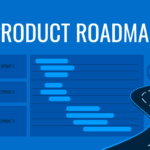Are you starting a new business venture and worried about achieving product-market fit? Clear up any misconceptions that may hinder your understanding of this critical business concept. What is the definition of product-market fit? Find out how to achieve it through this blog and embark on your discovery venture.
Product-market fit definition
Product -market fit is a new concept in the business realm, and numerous definitions are buzzing around, many of which overlap.
Product market fit is the degree to which your product meets the criteria of market demand.
In other words, the main objective of a startup is to meet the real time needs of their customer and does so in a way that is superior to other alternatives. It is practiced when your value proposition, distribution channels and your customer are in ideal alignment, and as a company its a key goal to develop a B2C or B2B product market fit.
Product-market fit: A key to successful development
Product-market fit is a crucial part of the product development process, as it signifies that a product successfully meets the needs and demands of its target market. It is achieved through rigorous market research, iterative development, and validation with real users.
At Brand New MD, we specialize in helping businesses reach this milestone with our comprehensive new product development services, ensuring your product not only fits but thrives in the market.
How to achieve product-market fit
Exploring the strategies to achieve product market fit is easier said than done. Although there is a distinct path for every company to achieve the product market fit, there are still few common ways to follow the road map. Here goes few essential tips to pave your startup a ways towards sustainable success for B2C or B2B product-market fit:
Establish your target Audience
Your target audience must be pre-defined,i.e., the users who are benefited from the product. Targeted customers can be identified through market segmentation. Start with a high-level hypothesis of who you consider your target consumers. Then revise and review your target users as you refine your product (a process known as iteration)
Define your customer’s needs
After you are clear about your target audience, you need to start product-market fit research to find out more about consumer needs. It’s essential to identify needs that relate with market opportunities. Ideal markets are defined by few key characteristics, including a large number of potential users, simple user acquisition and their sustainable growth.
Identify your value proposition
Next you must define your company’s value proposition, i.e., the plan for how your product meets the requirements of the customer better than the alternative products. Think about distinctive features of your product and make sure you don’t get distracted from your product roadmap. After all you don’t need to address all possible challenges to attain the ideal product market-fit.
Create and test your product
“Minimum viable product” is a crucial term to understand when planning your product-market fit strategy. Significantly this defines that your product meets the required standards that can satisfy customers and prove your business is going in the correct direction. Define a prototype for minimum viable product and get essential feedback from your targeted customers. You can evaluate your working insight that works or not before redefining the initial prototype. At the end of the testing and refinement phase, you should have created a product that helps you achieve the product-market fit.
Measure your product-market fit
Now, you need to measure your growth rate to determine whether your product-market fit strategy has been successful. Several database systems can help you track your performance. Start by calculating your total addressable market (TAM), and then determine what percentage of your customers fall within this TAM. This analysis will help you assess whether your product has achieved product-market fit.
Be vigilant
Finally, it’s important not to become complacent. One of the biggest mistakes is the idea that once you’ve achieved product-market fit, you can’t lose it. You can, it is significant to analyze the market consistently to ensure that you’re still aligning with the needs of your target customers.
Key Takeaway
In conclusion, achieving product-market fit is not a one-time milestone but an ongoing process that requires continuous adaptation and vigilance. It serves as the foundation for sustainable business success, ensuring that your product not only meets but exceeds the expectations of your target audience. By clearly defining your target customers, understanding their needs, and refining your value proposition, you can create a product that stands out in a competitive market.
Testing and iterating on your minimum viable product, followed by careful measurement of your progress, will help you fine-tune your approach. Remember, the market and customer preferences evolve, so maintaining product-market fit requires regular reassessment and responsiveness to changes. By staying attuned to your customers and the market landscape, you can secure a strong product-market fit that propels your business toward long-term growth and success.
If you’re interested in reading more articles from Brand New MD, you can start with the following:










